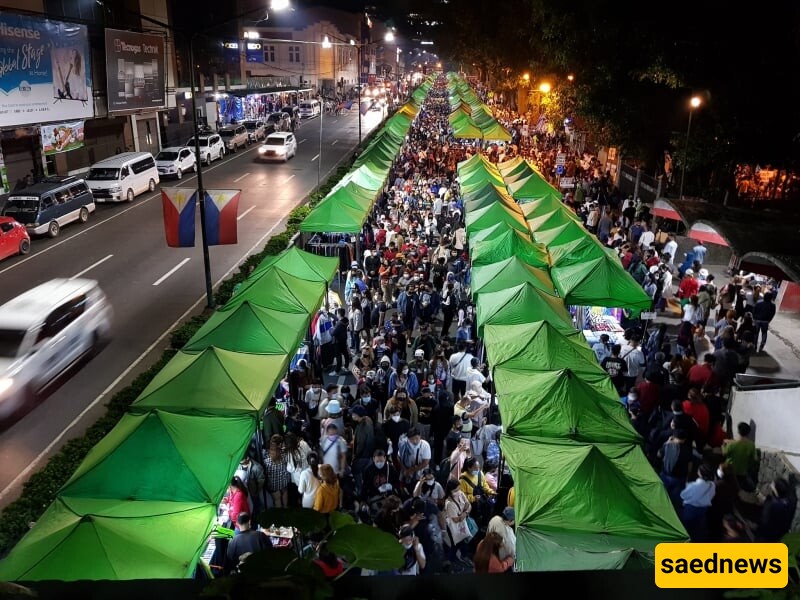SAEDNEWS: Traditional markets are more than hubs of commerce; they are windows into the soul of a nation. By examining their architecture, goods, and social fabric, we uncover how these spaces preserve heritage and reflect cultural values.

According to SAEDNEWS, old markets are vibrant representations of a nation’s history and culture. Beyond trade, they are places where traditions are upheld, stories are shared, and the essence of a community thrives. From bustling bazaars in the Middle East to serene European squares, these markets reveal the unique character of a society.
Historic markets are often defined by their unique architectural styles, which reflect the cultural and geographical context of their origins.
Middle Eastern Bazaars

In places like Iran’s Grand Bazaar in Tehran or Istanbul’s Spice Bazaar, covered corridors with intricate tilework and domed ceilings showcase centuries-old craftsmanship. These spaces were designed to offer shade and shelter, ensuring trade flourished regardless of weather.
European Market Squares
Medieval market squares like Brussels’ Grand Place or Kraków’s Rynek Główny reveal how trade and community intersect. Surrounded by ornate guildhalls and cathedrals, these open spaces emphasize communal life, blending commerce with social and political gatherings.
Asian Night Markets

In Asia, night markets in cities like Taipei and Bangkok combine practicality with flair. Vibrant stalls and narrow pathways reflect urban ingenuity, ensuring accessibility and liveliness.
Old markets serve as culinary time capsules, preserving food traditions that connect past and present. Markets like Morocco’s Jemaa el-Fnaa or India’s Khari Baoli are treasure troves of spices, herbs, and flavors. The aromas of saffron, cinnamon, and cardamom evoke centuries of trade and cultural exchange, showcasing the region’s culinary evolution.
In Southeast Asian markets, street food stalls offer a taste of local history. Recipes passed down through generations are brought to life in dishes like Thailand’s pad Thai or Vietnam’s bánh mì, making these markets a must-visit for food enthusiasts. European farmers’ markets, such as Barcelona’s La Boqueria, celebrate local agriculture. The stalls, brimming with fresh produce, cheeses, and cured meats, reflect the region’s commitment to sustainability and seasonal eating.
Markets have historically been spaces of human interaction and economic activity, shaping relationships and livelihoods.
Community Hubs
Old markets are gathering places where people of all backgrounds meet. In African markets like Ethiopia’s Merkato, vibrant exchanges between traders and buyers go beyond commerce, fostering connections and strengthening social bonds.
The Role of Barter and Trade
In earlier times, markets functioned as barter systems, exchanging goods before the advent of currency. This practice not only facilitated trade but also highlighted the interdependence of communities.
Economic Engines
Markets remain vital to local economies, supporting artisans, farmers, and small-scale businesses. Their resilience over centuries underscores their significance in national development.
Markets also serve as platforms for cultural expression, where artisans display their creativity and heritage.
Handicrafts and Textiles
In markets like Marrakech’s souks or Mexico’s Oaxaca markets, handmade goods such as carpets, pottery, and embroidered garments tell stories of craftsmanship and cultural pride. These items carry the imprint of regional traditions, often passed down through generations.
Music and Performance
Some markets, like those in West Africa or South America, feature live music and performances. These celebrations of local art add a festive atmosphere and reinforce the cultural significance of the market.
Historic markets have become global attractions, drawing visitors eager to experience their charm and authenticity. Tourists flock to markets for one-of-a-kind finds, from Turkish lamps to Peruvian alpaca textiles. These souvenirs serve as tangible memories of a place’s culture. Markets provide a sensory experience—vibrant colors, enticing aromas, and the hum of activity immerse visitors in the local lifestyle. Places like London’s Borough Market or Dubai’s Gold Souk illustrate how markets blend local traditions with global tourism.
Old markets are reflections of a nation’s soul. They capture the essence of cultural identity, showcase artistic and culinary traditions, and connect communities through shared history. As modern commerce evolves, preserving these spaces ensures that future generations can continue to experience the timeless stories they tell

